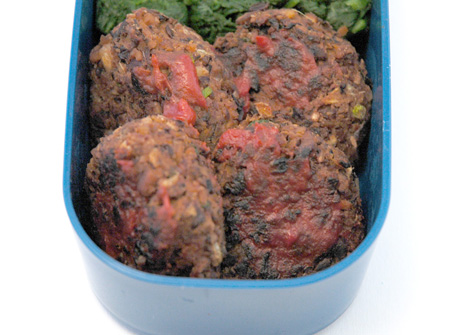
__From the archives. This is terrific freshy made and hot, but is even better cold, so it's great for bentos. Originally published in November 2007.__
Over the past couple of years as I've pursued
largely vegetarian eating, I've gradually accumulated a small arsenal of small, round bean patties or balls, which are great as snacks, for bento boxes, and just for dinner, in my regular rotation. This one was inspired by one of the first beany-round thing I made,
the samosa-like lentil snacks from
The Hungry Tiger, and a Japanese vegan cooking book called
_Saisai Gohan_ (Vegetable Meals) by Yumiko Kano. (Yumiko Kano is currently my favorite cookbook author in any language, and I'll talk more about her down the line.) I've adjusted a few things to make them gluten-free.
These have the earthy, deep flavor of the black beans that is enhanced by the spices and the sauce, and they are delicious hot or at room temperature. Even diehard carnivores like them. They're really perfect for bento lunches, and I've used it in the all-vegan
Bento no. 5 on Just Bento. I also used them as a pita-sandwich filling in
Bento no. 6.
I have described two methods of cooking these: in the oven, which is good for making them in quantity, and in a frying pan, which is perfect for making a few at a time.
Filed under:
japanese lighter legumes vegetarian vegan

I have not doing a lot of serious cooking lately, at least not the kind that results in a useful blog post. Most of my cooking energies have been expended on another project, which is wearing me down a bit (more on that at a later time). What I have been cooking for actual meals is very simple food, that requires minimal kitchen time, though not necessarily quick to cook.
The subject of this article is zucchini (courgette) slices that are slowly braised in a fragrant oil. It requires perhaps 10 minutes of actual kitchen time, but an hour or more to complete. Days even, if you choose one option. You don't need to hover over the pan for that time, but you do have to be nearby, to keep an eye on the hot oil, not to mention any errant pets, children or clumsy adults that wander in.
The wait and vigilance are worth it though. The zucchini slices, scented with the pine-mintiness of rosemary, become brown and sticky and almost caramelized on the surface, and soft and creamy on the inside. It's great as an accompaniment to roast or panfried meats or fish, or as part of a vegetarian meal (try it with pasta). I could have it every day, just on its own, if it weren't for the rather ruinous effect it has on my waistline, even if the oil is good-for-you olive oil.
This is the taste of late summer in Provence for me.
Filed under:
vegetarian provence summer vegan
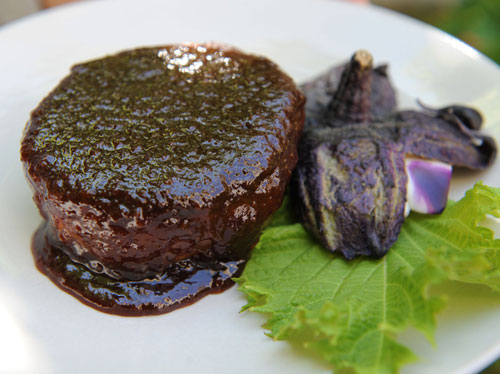
It's still summertime, but I can feel the cooler days of fall coming, especially in the evenings when the temperature is dropping just a bit more than it did a few weeks ago. This is one of the best times of the year for food lovers, especially if you love vegetables.
Eggplants (aubergines) are in high season now and will be around for at least another month or so. While you can get them year-round, they are at their best of course in their natural season.
This is a classic Japanese way of serving eggplant, and it's really easy. All you do is to slowly roast the eggplant until tender, either in the oven or on the stovetop in a frying pan, then serve with a glossy, salty-sweet dengaku (田楽)sauce. I could eat this every day, with a bowl of plain rice and some cold mugicha to wash it down.
Filed under:
japanese vegetables fall vegetarian summer vegan eggplant
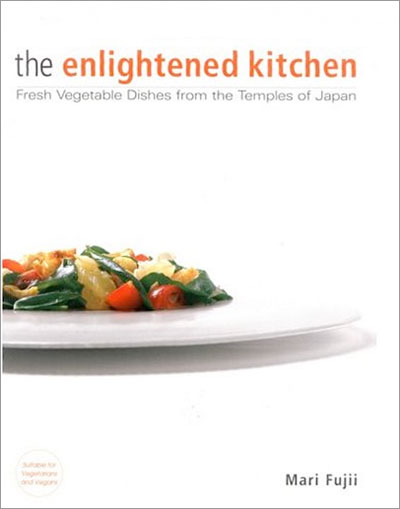
A review of The Enlightened Kitchen: Fresh Vegetable Dishes from the Temples of Japan by Mari Fujii, a beautifully presented, easy introduction to the world of shojin ryori (or shoujin ryouri 精進料理), the highly refined vegan cuisine developed by Buddhist monks in Japan. One copy of this great book is up for grabs!
Filed under:
books and media japanese vegetarian vegan
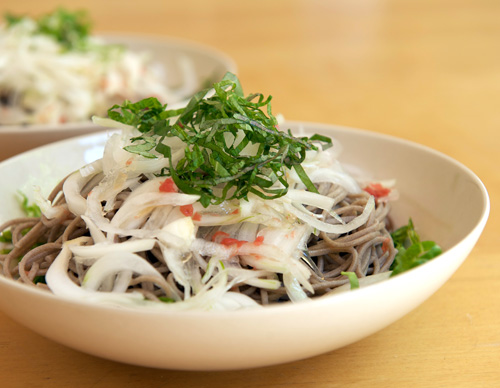
We still haven't found a house to buy (though we may getting close), and due to the way things work in France, we are probably going to be nomads for at least 4 more months even if we put in an offer for a place tomorrow. I've gotten more used to cooking in tiny holiday home kitchens, but I'm still not up to anything too complicated - or in other words anything that requires the use of more than 2 burners at a time.
Fortunately it's now summer, which means lighter, less complicated meals anyway. This salad, which can be a meal on its own, a starter or a light side dish, features sweet salad onions (spring is the season for them, at least around these parts), sliced paper-thin and refreshed in ice cold water. The tart dressing features umeboshi (pickled plums) and uses no oil, so this is an almost fat-free, fairly low calorie dish, that's vegan to boot.
Filed under:
japanese lighter vegetarian summer noodles vegan salad soba
Asha, the reader who sent me the question that inspired me to write Japan: A Survival Guide for Vegans has sent in a great follow-up comment. I've posted it here so you won't miss it. She found it a lot easier to follow her vegan regime in Tokyo than in Nagasaki, where she has been living. That makes sense I thin: any major metropolitan area these days is likely to have many people who are vegan or at least interested in a vegan way of eating, while the same might not hold true for more regional towns (Nagasaki has a long history of being a very international city, but is much smaller than Tokyo of course.)
What follows are Asha's words.
Filed under:
food travel japanese restaurants vegan japan
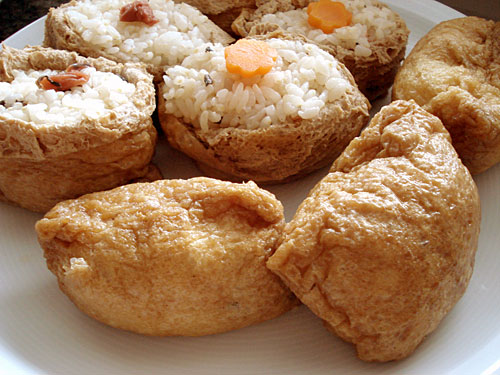
Four years ago I posted a very basic recipe for inarizushi, homely sushi that is stuffed into a fried tofu skin or aburaage. It's been one of the most popular articles here on Just Hungry ever since. That only gave instructions for stuffing pre-made (canned or vacuum packed) skins, so I thought I'd update it with instructions for making your own inarizushi skins from scratch. These instructions will be particularly useful to vegetarians and vegans, since most if not all premade skins are cooked in a fish-based traditional dashi stock. And, for all of you who have had problems making Eggs in Treasure Bags with those small, thin canned skins: You'll find that making the eggs from your own, sturdy skins is so much easier.
Filed under:
japanese vegetarian sushi favorites vegan washoku
At the moment I'm sitting in a cottage in France (recovering from a cold, but that's another story), a land notorious for not being so vegan friendly except in the larger cities. The native cuisine is generally not vegan - even vegetable dishes often use things like dairy products or animal fats or stock in the cooking process, which can make things difficult. But if you are a vegan you probably know about this, and come prepared accordingly. (I think it's a lot easier for lacto-ovo vegetarians in France; you could live on the delicious bread and cheese.)
If you are going to Japan, you might think that being vegan would be a lot easier. Japanese cuisine has a reputation for using lots of vegetables, seaweed and other vegan-friendly products. There is even a particular kind of cuisine in Japan called sho-jin ryouri (精進料理), a mostly vegan temple cuisine, with a long and highly regarded tradition.
But as a reader who emailed me recently found out, being a vegan in Japan is just as hard as it is in Europe.
Filed under:
food travel japanese restaurants vegan japan
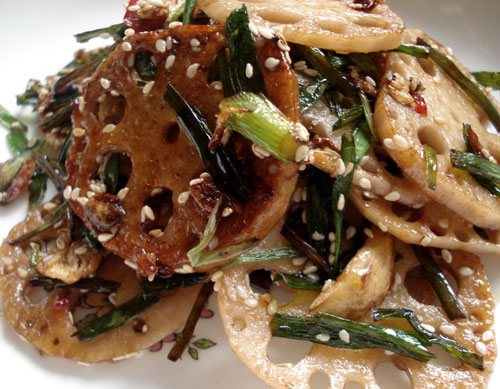
Lotus root (renkon in Japanese) is actually the rhizome of the lotus plant. It's a popular vegetable throughout southern and eastern Asia, but it's still not that well known in the west. Lotus root is full of fiber and various vitamins and other nutrients. In Asia it's believed to have various medicinal qualities, but in macro-nutrient terms it's best to think of it as a starchy vegetable, like potato. Visually of course, it's very appealing with all those little holes. Here I'll explain how it's prepared and eaten in Japan.
Filed under:
basics japanese vegetables vegan
Pages